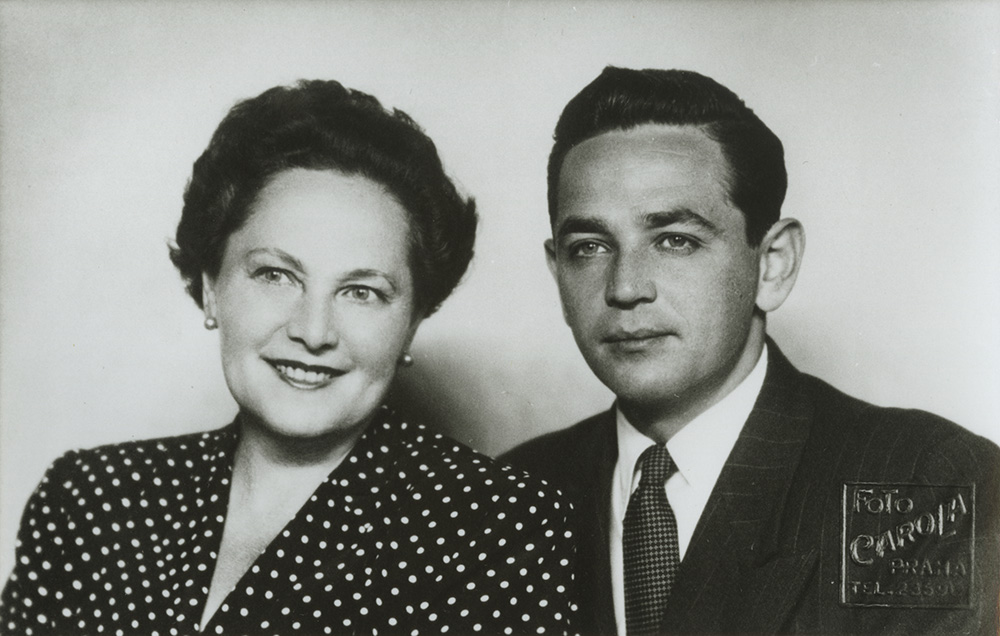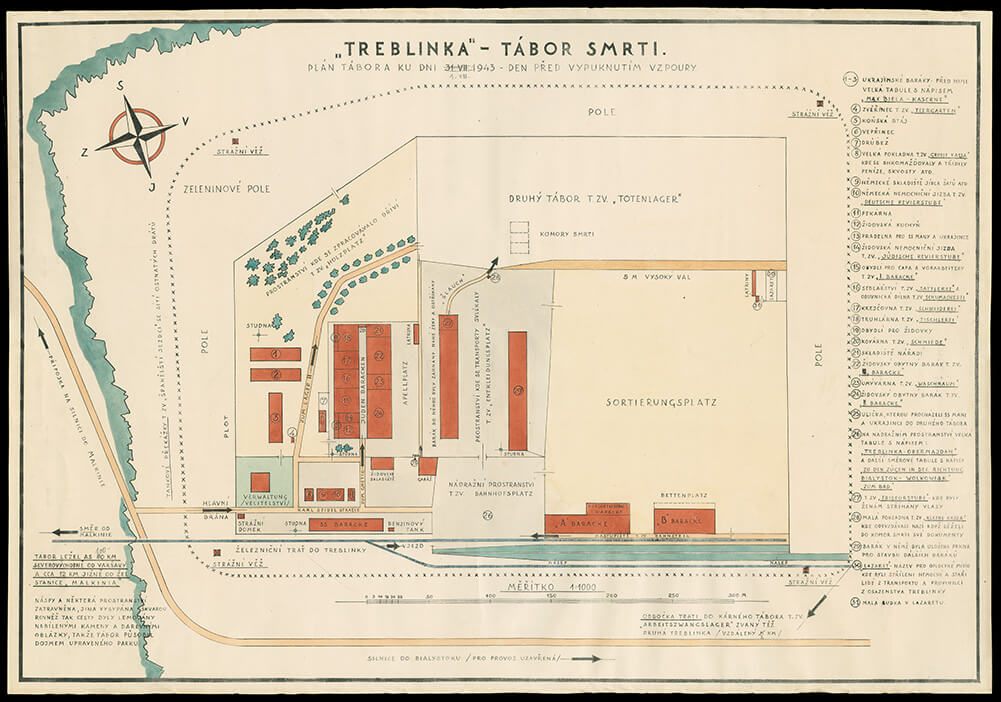Treblinka
The experience gained from Belźec and Sobibór was fully exploited in the construction of the Treblinka extermination camp. Treblinka became operational on 23 July 1942. The camp was divided into three sections: an administrative area where the SS guards lived, a receiving area (ramp, undressing area, yard where clothes and luggage were sorted) and an extermination area (gas chambers, burial pits, pyres for cremating the bodies). The area between the undressing room and the gas chambers was mockingly referred to as the “Himmelstrasse” (“journey to heaven”). Treblinka was a true death factory. In his subsequent trial, the camp commandant Franz Stangl stated that a transport of 30 freight cars with 3,000 people was liquidated in three hours. At the beginning of 1943, a resistance group emerged among the prisoners used for slave labour. One of the resistance leaders was Želo Bloch, a former officer in the Czechoslovak army. The uprising broke out on 2 August 1943. The prisoners took weapons out of a storeroom and managed to set fire to barracks, warehouses and workshops. They tried to escape, but many of them were shot from the watch towers and many were killed in the nearby forest. About 350–400 prisoners were able to break out, although only about 70 escaped to freedom. The remaining prisoners were forced to destroy all evidence of what had happened in the camp. Afterwards they too were shot. In total, more than 700,000 prisoners were murdered in Treblinka.
Ten transports carrying 18,000 prisoners from the Terezín ghetto were dispatched to Nazi-occupied Poland in the autumn of 1942 – starting on 19 September 1942 (Transport Bo), ending on 22 October 1942 (Transport Bx). Richard Goldschmid/Glazar and Karel Unger were the only ones from these transports who managed to escape during the uprising.

